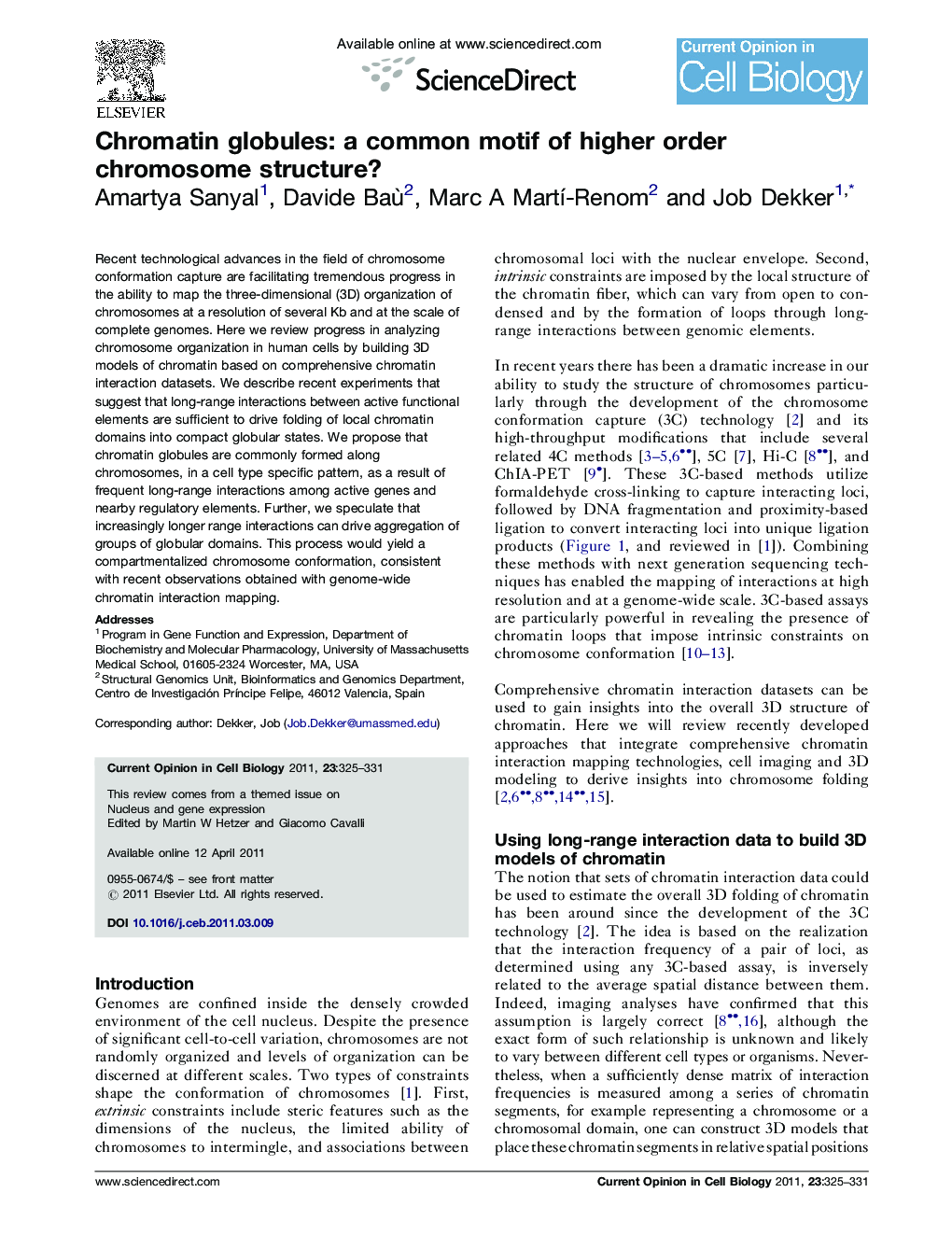| Article ID | Journal | Published Year | Pages | File Type |
|---|---|---|---|---|
| 2169830 | Current Opinion in Cell Biology | 2011 | 7 Pages |
Recent technological advances in the field of chromosome conformation capture are facilitating tremendous progress in the ability to map the three-dimensional (3D) organization of chromosomes at a resolution of several Kb and at the scale of complete genomes. Here we review progress in analyzing chromosome organization in human cells by building 3D models of chromatin based on comprehensive chromatin interaction datasets. We describe recent experiments that suggest that long-range interactions between active functional elements are sufficient to drive folding of local chromatin domains into compact globular states. We propose that chromatin globules are commonly formed along chromosomes, in a cell type specific pattern, as a result of frequent long-range interactions among active genes and nearby regulatory elements. Further, we speculate that increasingly longer range interactions can drive aggregation of groups of globular domains. This process would yield a compartmentalized chromosome conformation, consistent with recent observations obtained with genome-wide chromatin interaction mapping.
